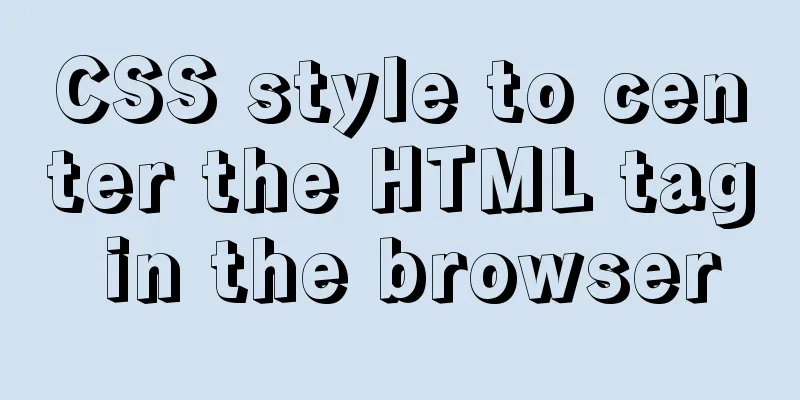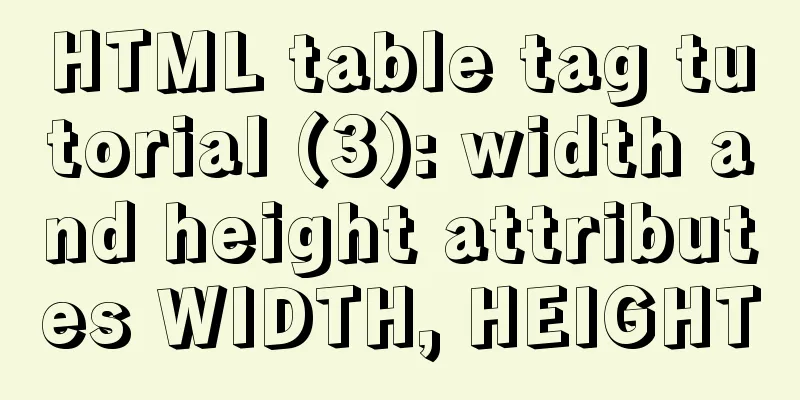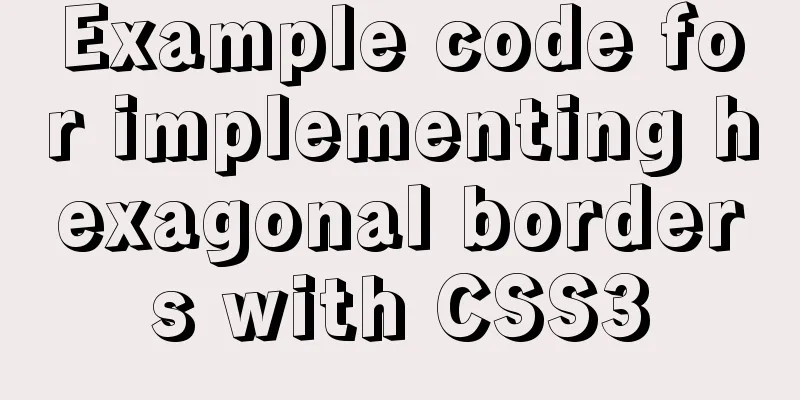Detailed explanation of the setting of background-image attribute in HTML

|
When it comes to pictures, the first thing we think of is the background picture. Because many of our decorations are realized using background images. In this case, let’s start with CSS controlling background images. Definition and Usage The background-image property sets a background image for an element. The background of an element takes up the entire size of the element, including padding and borders, but excluding margins. By default, a background image is positioned in the top left corner of an element and repeats horizontally and vertically. 1.CSS controls background images: When we start designing a web page, we may not think too much about what the background image is, because most of the time we just need to design the background color. The reason is very simple, because like the foreground music, it will have a certain impact on the speed of opening the web page. However, for general personal websites or personal blogs, it is of course indispensable for showing one's own personality. Of course, nothing is too perfect. There are pros and cons. That is, when the image is not available but CSS is available, the replacement content will not be displayed. Therefore, it is not recommended to use CSS background images in navigation button text or similar situations. (1) Importing background images: Of course, the ones that everyone is most familiar with are background and background-image. body {background:url("d:\images\04.jpg")} or body {background-image:url("d:\images\04.jpg")} (2) How to display the background image: It takes the value: repeat : The default value. Background image tiles in both vertical and horizontal directions As for the code, I think anyone who knows a little bit about CSS will know it, as follows: (3) Background image size control: But the question is, what if the image is too large? For a good web page, it is best not to use too large pictures. The reasons have been mentioned above, as it affects the speed of opening the web page. We'd better use PS or FireWorks to process it. But now that I mentioned it, we might as well use CSS to control the image size. Copy code The code is as follows:<style type="text/css"> body{background-image:url("d:\images\04.jpg");width:350px;height:350px;} </style> Oh, it's a good idea, but does your browser support it? I think IE or FF will definitely pretend not to see it. You may ask, when I designed the forum style, was it achievable? I think, if it is just the above code, it is impossible to control the image, because it only controls the size of the BODY. Of course, this is out of control. If it is any other ID tag, I think the size of the tag can be controlled. Haha, of course it is not the size of the image. Supplement: W3C released an article titled "CSS Backgrounds and Borders Module Level 3" on September 10, which added several properties to the CSS background that we have never seen before: background-clip: Although these attributes exist, there are currently no browsers that support them. It's so distressing. I did import the background image, but its position is really unacceptable. Because it defaults to top left alignment. But we don't want to place it like this, so what should we do? Don’t worry, the exciting moment is coming soon. Now, let’s get to know background-position, background-position-x and background-position-y. a. Basic syntax: background-position : length || length b. Syntax value: length : Percentage | A length value consisting of a floating point number and a unit identifier. c. Example: body { background-image: url("d:\images\04.jpg"); background-position: 50% 50%; background-repeat:no-repeat; } For the values of length | top | center | bottom, I only write the following three examples. body { background-image: url("d:\images\04.jpg"); background-position: top right; background-repeat:no-repeat; } After giving so many examples, I think you have a certain understanding of positioning. (5) Transparency settings for background images: Sometimes, we always want to set the image to transparent. (6) Setting multiple background images: I saw the setting of multiple background images in "Beyond CSS: The Essence of Web Design Art". However, I feel very sorry because currently there are too few browsers that support multiple background images in a tab, and the only one I know of is Apple Safari. You may ask, how is this possible? After you finish looking at this example, I think you will be surprised, "Oh my God, before CSS3, you could only use one image for each element." If you want to study it, install a SAFARI browser quickly. For me, I believe this is the way forward. In a word, whoever has a stronger ability to interpret CSS will be the trend of development, and whoever has perfect WEB standards will be the star of tomorrow's browser. Copy code The code is as follows:body { background-image: url("d:\mypic\001.png"), url("d:\mypic\002.png"); url("d:\mypic\003.png"); url("d:\mypic\004.png"); background-repeat: no-repeat, no-repeat, no-repeat, no-repeat, repeat-x, repeat-y, repeat-x, repeat-y, background-position: top left, top right, bottom right, bottom left, top left, top right, bottom right, bottom left;} |
<<: js implements array flattening
>>: How can MySQL effectively prevent database deletion and running away?
Recommend
Example of using JSX to build component Parser development
Table of contents JSX environment construction Se...
Detailed explanation of the new array methods in JavaScript es6
Table of contents 1. forEach() 2. arr.filter() 3....
How to expand the capacity of VirtualBox's virtual disk vdi file (graphic tutorial)
Find the installation directory of VirtualBox. Th...
Simple example of HTML text formatting (detailed explanation)
1. Text formatting: This example demonstrates how...
Detailed explanation of the use of css-vars-ponyfill in IE environment (nextjs build)
css-vars-ponyfill When using CSS variables to ach...
Make a nice flip login and registration interface based on html+css
Make a nice flip login and registration interface...
Detailed explanation of common usage of MySQL query conditions
This article uses examples to illustrate the comm...
HTML+CSS to achieve responsive card hover effect
Table of contents accomplish: Summarize: Not much...
Detailed explanation of the functions of each port of Tomcat
From the tomcat configuration file, we can see th...
jQuery implements percentage scoring progress bar
This article shares the specific code of jquery t...
Detailed explanation of MySQL startup options and system variables examples
Table of contents Boot Options Command Line Long ...
Native JS to achieve blinds special effects
This article shares a blinds special effect imple...
Summary of MySQL data migration
Table of contents Preface: 1. About data migratio...
An example of changing traditional replication to GTID replication without stopping business in MySQL 5.7
Due to the advantages of GTID, we need to change ...
How to use IDEA to configure tomcat and create JSP files
Before using idea to write JSP files, you need to...









